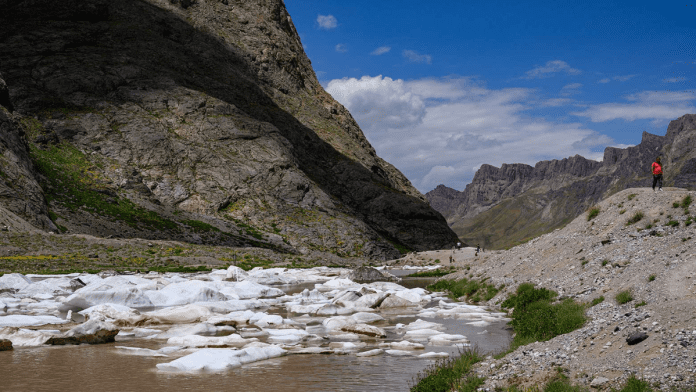🕒 Last updated on July 30, 2025
The icy peaks of Turkey’s mountains are quickly losing their snowy crowns. In the southeastern part of the country, the towering Mount Cilo is one of the worst hit.
Turkey’s Frozen Giants Are Melting Fast
Just ten years ago, this mountain was covered in thick layers of glaciers. Today, under a cloudless sky, those glaciers are shrinking fast. Streams now rush down its slopes, carrying chunks of ice that used to be part of giant frozen fields.
Mount Cilo, which is 4,135 meters high, is home to the second-largest glacier field in Turkey, behind Mount Ararat. But every year, more and more ice disappears. The ice that once stayed frozen all year is now melting faster than expected. New green patches of grass and bare rock are showing up where white snow used to be. The beauty is still there—but the cold, frozen parts are fading.
Turkey has been facing extreme heat and dry weather in recent years. In a nearby town called Silopi, temperatures hit a record 50.5°C, making it the hottest place in the country. These heatwaves, caused by climate change, are speeding up glacier melt across the region.
Glacier Melt Changing the Landscape
Researchers studying these glaciers have confirmed that nearly half of the permanent ice and snow cover in the area has disappeared in the past 40 years. Not just in Turkey, but all throughout the world, glaciers are melting. But in Turkey, the speed of this change is alarming.
What used to be solid ice is now turning into waterfalls. These fast-flowing streams are strong signs that the glaciers are breaking apart quickly. Large blocks of ice can be seen floating in the water, breaking away from their frozen homes high on the mountains.
Experts say not all places melt at the same rate. Some areas disappear quicker than others, making it difficult to plan protection efforts. In some countries, people try to cover glaciers with white blankets to slow the melting, but the process isn’t something that can be done everywhere.
This melting ice also puts people at risk. In July 2023, two hikers lost their lives when a heavy block of ice suddenly broke off and swept them away. Mountain guides warn that walking on glaciers has become very dangerous. What looks like a frozen path may actually be thin ice ready to collapse.
Human Activity Speeds Up Melting
The Hakkari mountains, where Mount Cilo is located, were once hard to reach. There were no proper roads, and few people visited. But now, with the area turned into a national park and new roads built, more hikers and visitors are coming. Vehicles, foot traffic, and human presence are all affecting the ice.
Experts believe that the rise in tourism is making the melting worse. As more people arrive, the ice gets weaker and thinner in some areas. The region, once quiet and cold, is now bustling with activity—adding to the pressure on the fragile glaciers.
⚠️ Silicon betrayal? Cadence admits to illegally exporting tech linked to nuclear weapons
This melting is not just about ice. A significant supply of water for neighboring areas comes from glaciers. As they vanish, the future water supply for many towns and villages could be in danger. A United Nations report says that many glaciers across the world may disappear before the end of this century.
Meanwhile, other studies warn that most of Turkey’s land could become dry and desert-like. Nearly 88% of the country is at risk of desertification. Rainfall is expected to drop by 30% by the year 2100. At the same time, temperatures may rise by 5 to 6 degrees Celsius compared to past records.
What’s happening in Turkey is a clear example of how climate change is not just about rising seas or hotter cities. It’s also about losing natural wonders like glaciers—places that have been frozen for thousands of years.

